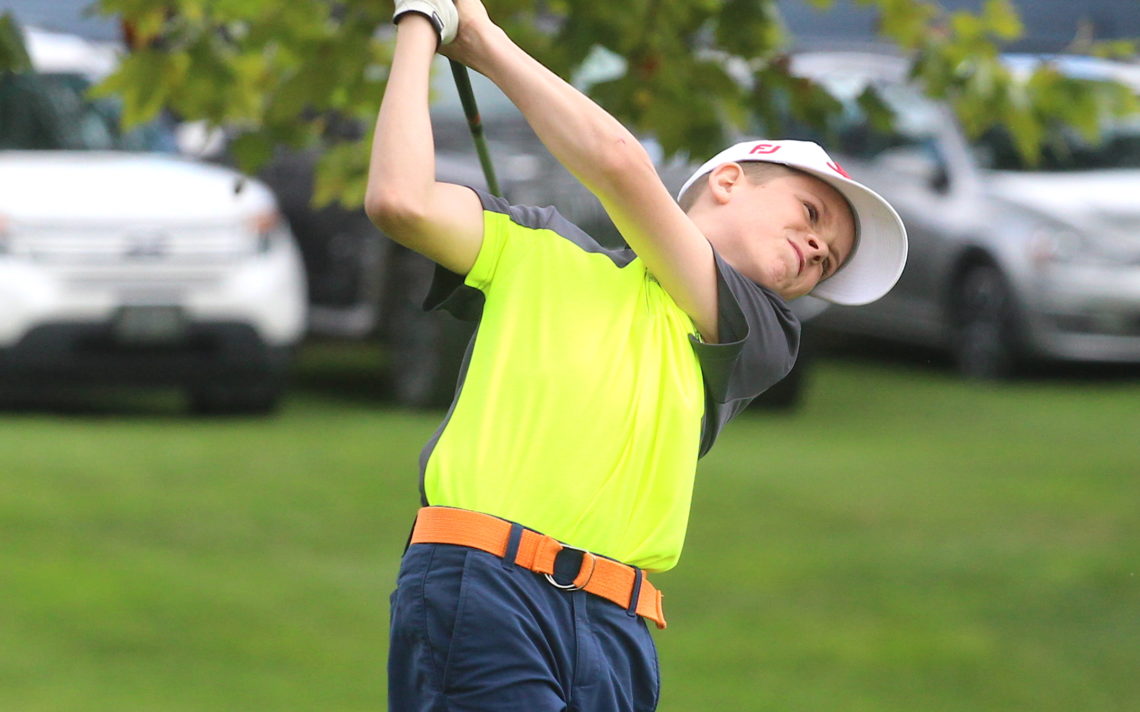
Niagara golf courses cautious but hopeful
Cautious is the best word to describe the mood of Niagara’s 37 golf course owners/operators in the wake of the COVID-19 pandemic.
“We know that golf is going happen and we are hopefully going to be one of the first industries to open back up because we can do it in a safe manner,” said Sawmill’s Carrie Julie, a regional manager for Golf Ontario and a member of Golf Niagara.
Golf courses will be launching a publicity campaign Tuesday and the message will be that the courses will be ready when it is safe to play them.
Last Tuesday, Julie hosted an online meeting of 22 of the 37 member courses of Golf Niagara, a working group of local courses.
“On the call (online meeting), no one wants to open up unless it is safe for the public’s health and until the government deems that it is safe,” she said. “We also know that golf as it was, the business, there is no normal any more.”
Golf has been declared a non-essential activity by the provincial government and that declaration was recently extended until May 12.
Like every business in Canada, the courses are worried what the future holds for them.
“There was a lot of talk about the wage subsidy and the business loan,” Julie said. “We are cautiously optimistic but there is still money going out and no money coming in.”

All the courses are in the same boat.
“We are able to maintain golf courses with a very small crew, doing only what is essential, but there is still money going out,” she said. “There are still mortgage payments, you have fertilizer payments and your inventory has already arrived for the pro shops. You are sitting on thousands of dollars of inventory.”
The golf courses all have to be maintained even if there are no golfers.
“I am comfortable in saying that at nearly all the golf courses, the golf pros, GMs and owners are out working on the golf courses,” Julie said. “John White (Beechwood head pro) was on a mower Friday.
“This is all hands on deck to survive.”
Local golf courses operators have been heartened by the moral support they are receiving from their members. Some of the courses are doing Friday night takeout dinners to stay relevant and a lot of members are driving by the golf courses to check them out.
“There is some concern but, from a membership standpoint across the region, the members are very supportive and just looking forward to the day they can come back.”
The courses also need the financial support of their members and the general public.
“The best thing people can do is to pay membership fees if they are a member at a course and for the general public, when the courses open, to please, please come out and play golf.”
Each golf course in Niagara will have their own individual polices in regard to returns but most expect to pro-rate the returns based on when the courses open, Julie said.
Province-wide, it is estimated golf courses employs more than 100,000 during the summer months and add billions of dollars to the economy.
At Sawmill, the full- and part-time staff includes: eight senior maintenance workers, made up of full-time workers and university students; four junior maintenance workers, made up of high school students; 21 food and beverage workers; and, six employees manning the pro shop.
“Food and beverage probably won’t even open this summer and, if it does, you will only be operating with three people,” Julie said. “This is going to have devastating results on the economy and on people in general because we are not going to employ the numbers we usually employ.”
Also falling victim to the pandemic will be charity golf tournaments and events such as weddings that are held at golf courses. Sawmill was supposed to host to seven charity tournaments this summer and all have been cancelled.
“Picture that from a fundraising standpoint,”Julie said. “Those were for old age homes, schools and imagine the trickle-down effect. Those schools aren’t making $20,000 and how is that going to effect them?
The golf industry will be able to take advantage of some the federal government initiatives to help businesses cope with the pandemic including wage subsidies and loans.
“Several owner/operators have already applied for the $40,000 loan and received it,” she said. “We can’t apply for the 75 pre cent wage subsidy yet but they will backpay it until March 15. No one can get their money yet.”
Another program courses will be able to take advantage of is a student program that will pay 100 per cent of the wages for university students.
Golf courses in British Columbia and many U.S. states are open for business now and there are plenty of things that can be done to make it safe.
Among them, Julie lists the possibility of: inverted or raised cups so no one has to touch the pins or each in for their golf balls; ball washers eliminated; benches removed or overturned; no rakes in bunkers; takeout menus like other restaurants or no services when the courses first open; no garbage cans on the courses; personal protective equipment for employees; roped off putting greens; ranges being the last service opened; online payments of green fees; use of pull carts and power carts only if there’s enough supplies to sanitize them (currently a problem at B.C. courses); and, and increased tee time intervals
“Are they going to give us 10 minutes or 15 minutes and are they going to give us a limit on how many members per group?” Julie said. “If they give us 15-minute intervals with two people per group, is it even worth it to open?”
Julie confident the openings can be done in a way that keeps the golf course employees and the golfers healthy.
“We can do this and we can do it safely.”
She feels the sport is crucial to the mental and physical health of those that participate in the sport.
“You can’t go to a park right now, but being able to come and walk in nature, the mental health benefits are really significant, especially as this goes on and we have to keep social distancing.”

























